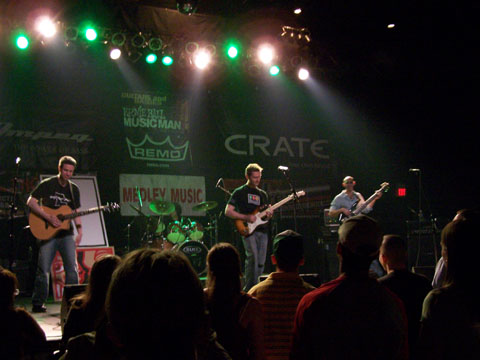Extreme Makeovers: People & Organizations

There’s some truth in the statement that a good consultant shouldn’t be afraid to tell a client when their “baby is ugly”. If you’ve got evidence to back it up, it does nobody any good to keep quiet in the interest of not making waves.
Some folks take pride in their blunt approach to delivering this kind of news, seeing themselves as uncompromising Howard Roarks and idealistic warriors for their discipline. And yes, there are some clients who are enamored of this kind of audacity (at least at first), but personally I’ve found that far more appreciate your taking the time to understand the political and emotional landscape and be more tactful about how the message is delivered. This measured approach need not be any less confident; contrary to being rendered mediocre by not reflexively shooting from the hip, it’s simply more collaborative and thoughtful.
We’ve been talking with a few organizations lately that have a rich history of success but just haven’t kept up with the times. I’ve been trying to put myself in the shoes of a company that, like the nerdy kid in the teen flick, is told that they need to lose the glasses, stop staying in to paint pewter figurines on Friday nights, and learn to dance. It’s an easy and perhaps obvious thing for a consultant to identify, but what must it feel like when you’re on the receiving end? Particularly when your vision and sweat equity created that identity in the first place? It’s personal.
I’ve come up with a metaphor from my own life, and think there might be a few lessons in it.
Lesson #1: self-perception, however valid, is weighty
Playing music has been on the back burner for me lately, but for a long time it was my main outlet outside of work and a big part of my identity. It may not have actually been a big part of how others saw me, but being a musician was a big part of how I saw myself. When friends would, from time to time, suggest that music might not be as fundamental to my external identity as I thought it was, even though I knew deep down that was probably true, I reflexively pushed back. But privately, it prompted major self-examination and redefinition that took place over the course of years.
When consultants make statements like “we really should think about a new name and logo”, it’s like throwing verbal grenades into the middle of the room… not understanding the emotional bedrock you might be upsetting could be a critical mistake. Delivering feedback like that requires careful thought about how to frame it and planning for where to productively take the conversation afterward.
Lesson #2: appreciate unique trigger points
For years I identified as a “Fender Guy”, and in almost all pictures snapped during my years of musical activity, I’m wearing a Strat or a P-Bass—that’ll do a lot to influence self-perception. The unique feel and weight of those instruments, the way that they looked when staring down at them onstage, the way that they responded when playing them… these things became essential and core to my relationship with the music I made.
However, at one point my live setup was becoming a bit cumbersome, and another instrument and amplification/effects combo become much more logical for what I was trying to achieve. Considering a move to a new instrument was agonizing for me. If I wasn’t playing a Fender on stage, who was I? Was I the same musician? Was I even the same guy? These were questions that at best baffled and at worst bored my family and friends. “Music is music, who gives a crap? Get the guitar that makes the most sense and get on with it. Does it even matter?” Yes, it does.
Every unique person in every unique organization will have his or her own little variant on this theme that is critical to empathize with should you travel down this rocky road with them. As an outsider, what you may deem trivial may be absolutely crucial to your client, even if only temporarily until their vantage point is altered.

Lesson #3: focus on the constants, not the variants
In the end, those who suggested that the instrument didn’t matter were partially right. Like those of us who believe there’s a certain warmth to listening to music on vinyl (in the music itself or at least the ritual of the experience), you can’t deny the aesthetic of a favorite instrument… for me, it’s even how the darn thing smells when I open the case. But to achieve what I was trying to make happen on stage, it turned out I did need to make a switch. For a while it was a bit like wearing new shoes you’re not completely sure of, but eventually I grew into my new “persona” and felt it was for the better.
I’m not kidding myself that anyone else out there cared, but it mattered deeply to me. I moved through it by staying focused on the core of the music itself, that would remain constant no matter what instrument I was playing. This is similar to the core values conversations that are had around branding and rebranding, because on a small scale, that’s what I was doing to myself.
I suppose it’s not much different than a change of wardrobe or hairstyle… it’s a good friend indeed that will pull you aside and suggest an update, and a better one that does it with the required tact, an action plan, and a true understanding of who you are at the core and what’s important to you. A good consultant does that too.



